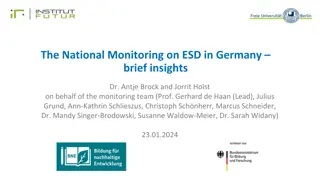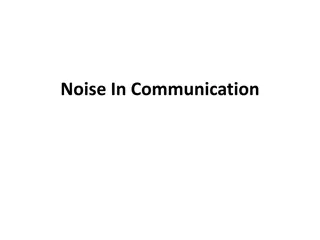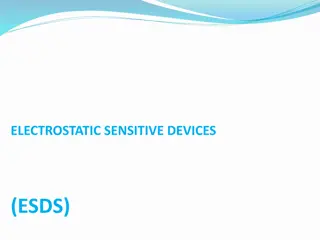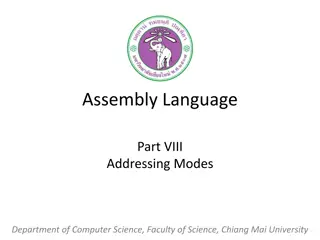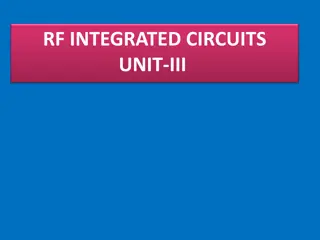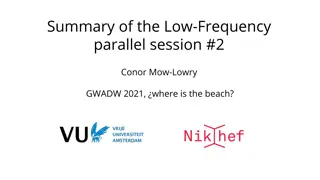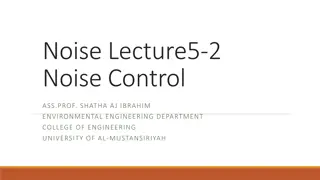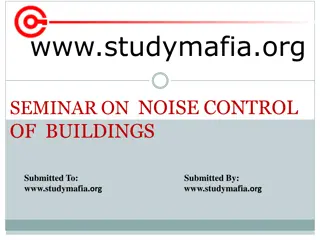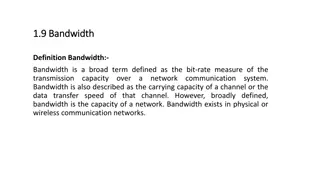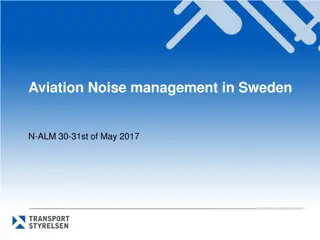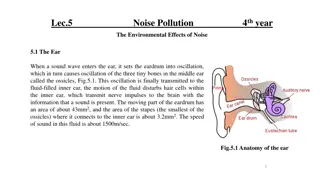Understanding ESD Force, Noise, and Range in Various Modes
This content discusses ESD force, noise, and range in different modes of operation, presenting assumptions, possible operation modes, and details on maximum range mode and noise characteristics. It explores concepts like control voltage offset, force noise calculations, and practical applications for optimal performance.
Download Presentation

Please find below an Image/Link to download the presentation.
The content on the website is provided AS IS for your information and personal use only. It may not be sold, licensed, or shared on other websites without obtaining consent from the author. Download presentation by click this link. If you encounter any issues during the download, it is possible that the publisher has removed the file from their server.
E N D
Presentation Transcript
ESD Force Noise and Range for Various Modes of Operation Brett Shapiro G1400537
Assumptions Following T1200479-v2 Bias channel is low passed, so has negligible noise Control channel voltage noise is independent of drive amplitude All ESD quadrants have the same force range
3 Possible Modes of Operation 1. Maximum range Bias voltage at maximum. Use an offset on the control voltage to get symmetric bipolar force range. 2. Reduced bias same as max range mode, but with a smaller bias to reduce noise. 3. No control voltage offset the control voltage offset is turned off to reduce noise. Bias is at maximum.
Maximum Range Mode - range F =a Vb-Vs ( if Vs=-Vb ) 2 ESD force ( ) 2 Fmax=a Vb+Vb Max force for a voltage limit of Vb Fmax=4aVb 2 To get bipolar actuation, we typically set DC force of half the maximum range F =Fdc+Fac Fdc=1 2Fmax=2aVb Splitting the force into DC an AC parts ( )Vb 2 Vs,dc= 1- 2 realized with Fac 1 2Fmax=2aVb 2 AC force range Fac 1 2Fmax=2aVb,max 2 if Vb=Vb,max
Maximum Range Mode - noise recall F =a Vb-Vs ( ) 2 ESD force expanding F =a Vb 2-2VbVs+Vs 2 Splitting the signal voltage into a control part and noise part Vs=Vc+vn Plugging this back in ( ) 2-2VbVc+vn ( )+ Vc F =a Vb And simplifying 2+2Vcvn+vn 2 F =a Vb assume v2 F =a Vb ( Fn=2a Vc-Vb 2-2VbVc+Vc 2-2Vbvn+2Vcvn+vn 2 n 0 )+2a Vc-Vb ( )vn 2-2VbVc+Vc 2 ( )vn This is the general solution for force noise
Maximum Range Mode - noise Splitting the control voltage into a DC part and AC part Vc=Vc,dc+Vc,ac ( )Vb Vc,dc= 1- 2 As before, for the half max force offset recall ( )vn and Vb=Vb,max Fn=2a Vc-Vb Vc,ac=0 The average force noise amplitude is found setting Note, this is a factor root 2 greater than in T1200479-v2, due to the inclusion of the Vc term. Fn,ave=2 2aVb,maxvn This is the expected noise if the AC voltage is much less than the bias Vc=-Vb,max If not, the maximum force noise amplitude is found setting Fn,max=4aVb,maxvn
Reduced Bias Mode Reuse the range equation from the full range mode, but with smaller bias voltage This assumes we enforce symmetric saturation (control could go to max, even if bias doesn t, but we assume the control stays within the bias). Fac 2aVb 2 For example, if Vb=1 2Vb,max then Fac aVb,max 2 Which is half the range of the full range mode Reuse the noise equation from the full range mode, but reduce the bias Fn,max=4aVbvn Fn,ave=2 2aVbvn and For example, if Vb=1 2Vb,max then Which is root 2 less than the full range mode Fn,ave=2aVb,maxvn Fn,max=2 2aVb,maxvn and
No Control Voltage Offset Mode Range Vc=Vc,dc+Vc,ac Set the DC part to 0 As before, split the control voltage into a DC part and AC part Vc,dc=0 Fdc=aVb,max 2 The DC force is now half what it was in max range mode, assuming max bias 4aVb 2 The AC range is then (since the total force can go from 0 to ) Fac aVb,max 2 -aVb,max Fac 3aVb,max 2 2 for symmetric saturation The symmetric range is half the max range mode, and the same as dropping the bias by root 2 in reduced bias mode. Noise Fn=2a Vc-Vb ( )vn Recall the general solution for force noise This noise is root 2 less than the max range mode, and the same as dropping the bias by root 2 in reduced bias mode. For symmetric range, where max force comes from Vc= 1- 2 Fn,ave=2aVb,maxvn ( )Vb Fn,max=2 2aVb,maxvn
Conclusions We can reduce the noise of the ESD by operating it out of the typical full range mode, at the expense of reduced force range. The mode where the DC control voltage is set to zero is equivalent to reducing the bias voltage by sqrt(2) in the reduced bias mode. According to this modeling, adding extra infrastructure to the ESD simulink diagram to remove the DC control voltage is not needed. Just reduce the bias voltage instead.



